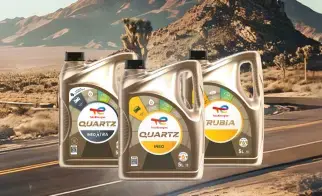The ultimate guide to engine coolant and antifreeze
What is engine coolant and what does it do?
Engine coolant is a mixture of water and antifreeze that keeps the temperature of your engine and its components at a safe level. It does this thanks to having a lower freezing point and higher boiling point than water. The fluid draws away excessive heat from, or heats up, components in the engine by flowing through the cooling system around the engine.
Without coolant, parts can corrode, seize up, and break, so it’s a key ingredient to maintaining your car.
On this page, learn everything you need to know about engine coolant, including how to diagnose issues and use coolant effectively.
Choose TotalEnergies coolant and antifreeze
TotalEnergies has a wide range of antifreeze and coolant products available to motorists. COOLELF coolant and GLACELF antifreeze are designed to not just cool engines and stop them from seizing up, but to protect parts from corrosion, improve part lifespans, keep cooling systems clean, and much more.
COOLELF RANGE
GLACELF RANGE
You might also be interested in

Find the right oil for my car

Buy our engine oils

How to guides
